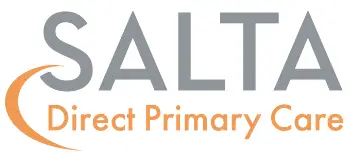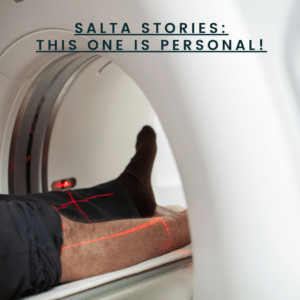What should I do if I develop symptoms and how do I know if I need to go to the emergency room? The symptoms can vary from no symptoms at all to just a runny nose or to more severe symptoms like fever, cough, and shortness of breath. The first thing you do when you start getting symptoms of an infection you contact your primary care physician. One of the big things that we are trying to do in primary care is the first line of defense to keep people out of the emergency room and out of the hospitals. Those need to be reserved for the sickest patients right now. The hospitals are getting fuller. They are not admitting everyone with shortness of breath. The decision about who gets admitted to the hospital is made by the emergency room provider. They decide based on the person’s risk and over all severity of the illness. This means you may have shortness of breath, maybe have it when walking around the house and noticing the advancement of the symptoms. It is so important to talk to your primary care provider. Another important thing is a pulse oximeter. This is a device that goes onto your finger to measure the level of oxygen in your body. This device is important in measuring your risk if you need to be admitted. They sell these pulse oximeters online, in drug stores, your primary care providers have them in their offices. At SALTA we are working with patients at home right now that have COVID. We are keeping them at home if we can manage them from home. 97-100% is the normal oxygen level. We are currently successfully managing patients at home with oxygen in the low 90’s. We are doing this to keep out of the hospitals and ensure they are receiving the best care. If the patient is starting to get bluish in lips or face, they are beginning to get confused this could indicate the oxygen levels are decreasing and critically low and they should go to the ER.
How do we sterilize the things we are bringing in like mail and groceries? One of the things I want to emphasize is that you should wash ever thing under water and soap. This virus does not live long on objects like cardboard. If you buy these at the grocery store. It is important to keep distance at the store, wash your hands at the store, and some of the harder objects like plastic you can wipe down. However, if you place in your cabinets and let them sit there the likelihood is that they are going to be disinfected overtime. The virus does not live long. There is no evidence proving that this is a real strong vector to bring it into the house through mail and groceries. But it is reasonable to leave a box in your garage to give things time if a handler may have the virus. You should not overly worry about this. We cannot stress over this; it is not a strong transmission. The strongest transmission is being in contact with someone and then touching your nose or mouth. We know there is a lack of disinfecting solutions available in the grocery stores. One of the things they say on the CDC website is to take 1/3 cup of bleach to a gallon of water and create a good disinfectant. You want to do this mixing in a well-ventilated area, and you don’t want to mix bleach with any other kind of chemical.
Do we have to worry about our pets? Do you have to be careful if you or someone you know is petting your dog? Again, there is no scientific evidence supporting this is a strong vector. Very unlikely that you are going to get it this way. However, anytime you are done petting an animal you should wash your hands anyway.
One of the things I am grateful for is my Stormy Cromer hat. This is my hat that I wear hunting camp and finishing and in the colder weather. My wife never allows me to wear this hat unless I am out hunting or fishing! So out here in the COVID camper I get to wear my hat and my wife IS going to kill me for wearing this in this video. Sorry Julie!
One positive thing that I hope comes out of this is another part of mindfulness. The tremendous stress response that this is causing in a lot of people I am hoping I can help them understand that the stress we are feeling now is the same stress response that we have from everyday events in our lives outside of the viral pandemic. There is a stress response and there is also a relaxation response that counteracts the stress response. There are strategies we can follow that allow us to elicit a relaxation response and counteract the stress. Long periods of stress are detrimental to the body. It can lead to health problems. In fact, 70% of all visits in the primary care setting are related to stress in our lives, or a behavioral or mental health problem. So, chronic stress response can lead to depression and anxiety. It is important to learn how to meditate and elicit a relaxation response. I have said before there’s apps that you can get on your phone like Headspace that show how to elicit the relaxation response through meditation. Meditation basically involves clearing the mind, so you stop thinking for a moment. The idea is to think about 1 thing and that is called a mantra and a mantra can be a repetitive muscular movement like crocheting, doing yoga, Tai Chi or it could be a repetitive sound like listening or focusing on nature sounds. A mantra could also be a repetitive prayer or a repetitive word. So, you’re filling the mind with a mantra and for that time that you are meditating you are calming the mind. It’s a restful state of the mind that is conscious awareness because you’re focusing on one thing. The recommendation is to get 20 minutes of meditation in a day to counteract the stress response. I highly encourage all of you to do that! There are 20 thought distortions that occur. Thought distortions are another thing that drives stress response. So, we are going to identify what those thought distortions are and then help turn them around and find a way to clear and thereby lowering the stress response.
DPC works for me simply allows us to take a panel of 2400 patients that a normal traditional primary care model handles and shrink it down to 800 patients. Each provider has a small manageable panel of patients that generates about 10 visits a day as opposed in a traditional setting of a provider seeing 20 to 30 patients a day. We have a smaller panel, smaller number of patients and then we can give them more time, more attention, and more care for each patient in our practice.
Thanks for tuning in! If you want to learn how direct primary care can work for you, feel free to call Kyle at 248.922.3076. Kyle can answer all your questions and see what six of our locations is best for you or your company near you! You can also follow us on Facebook @salta_directprimarycare. OR you can search us on Google stating, “direct primary care near me!” or join right on our website at saltadirect.com
Stay safe! Love each other! See you tomorrow!




